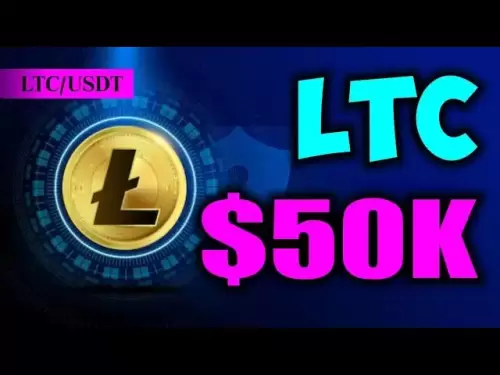-
 Bitcoin
Bitcoin $118800
0.58% -
 Ethereum
Ethereum $3813
6.89% -
 XRP
XRP $3.529
2.75% -
 Tether USDt
Tether USDt $1.000
-0.01% -
 BNB
BNB $755.1
3.06% -
 Solana
Solana $183.0
2.98% -
 USDC
USDC $0.9997
-0.01% -
 Dogecoin
Dogecoin $0.2670
9.75% -
 Cardano
Cardano $0.8748
5.90% -
 TRON
TRON $0.3192
0.08% -
 Hyperliquid
Hyperliquid $47.26
5.01% -
 Stellar
Stellar $0.4763
2.59% -
 Sui
Sui $4.001
5.68% -
 Chainlink
Chainlink $19.68
8.62% -
 Hedera
Hedera $0.2796
3.70% -
 Bitcoin Cash
Bitcoin Cash $550.9
9.05% -
 Avalanche
Avalanche $25.39
6.47% -
 Shiba Inu
Shiba Inu $0.00001557
5.68% -
 Litecoin
Litecoin $117.7
15.59% -
 UNUS SED LEO
UNUS SED LEO $8.975
-0.11% -
 Toncoin
Toncoin $3.315
4.44% -
 Polkadot
Polkadot $4.581
7.41% -
 Uniswap
Uniswap $10.84
7.11% -
 Pepe
Pepe $0.00001451
10.27% -
 Ethena USDe
Ethena USDe $1.001
0.00% -
 Monero
Monero $327.5
0.06% -
 Bitget Token
Bitget Token $5.018
2.63% -
 Dai
Dai $0.9999
0.00% -
 Aave
Aave $334.4
5.21% -
 Bittensor
Bittensor $432.3
3.73%
Is blockchain scalable?
Blockchain scalability remains a critical challenge, balancing speed, security, and decentralization as networks like Ethereum and Solana aim to support mass adoption through innovations like sharding and Layer 2 solutions.
Jul 20, 2025 at 05:00 pm

Understanding Blockchain Scalability
Scalability in the context of blockchain refers to the ability of a network to handle increasing amounts of data and transactions without compromising performance or security. This issue has been a central topic in the cryptocurrency community since the early days of Bitcoin. The challenge arises because most blockchain networks are decentralized, meaning that every node must validate every transaction. As the number of users and transactions grows, this consensus mechanism can lead to bottlenecks.
A key metric used to assess scalability is Transactions Per Second (TPS). For example, Bitcoin processes around 7 TPS, while Ethereum handles approximately 15–30 TPS. These numbers are significantly lower compared to traditional payment systems like Visa, which can process thousands of transactions per second. The low TPS of blockchain networks raises concerns about their viability for mass adoption.
Layer 1 vs. Layer 2 Scaling Solutions
There are two primary approaches to improving blockchain scalability: Layer 1 and Layer 2 solutions. Layer 1 involves modifying the base protocol of the blockchain itself. Examples include increasing block size, reducing block time, or switching consensus mechanisms. Bitcoin Cash, for instance, increased the block size from 1MB to 32MB to allow more transactions per block.
Layer 2 solutions, on the other hand, operate on top of the existing blockchain and aim to reduce the load on the main chain. The Lightning Network for Bitcoin and the Raiden Network for Ethereum are examples of off-chain scaling solutions. These systems enable users to conduct multiple transactions off the main blockchain and only settle the final balance on-chain. This drastically reduces congestion and improves transaction speed.
Sharding as a Scalability Mechanism
Sharding is a promising Layer 1 scalability solution that divides the network into smaller segments called shards. Each shard processes a subset of the network’s transactions, allowing the system to handle many more transactions in parallel. Ethereum 2.0 is incorporating sharding as part of its long-term scaling strategy.
Each shard operates independently and maintains its own state, but they are coordinated by the main chain (beacon chain). This design allows for horizontal scaling, meaning the network becomes more efficient as more nodes join. However, sharding introduces complexity in terms of cross-shard communication and security, which must be carefully managed.
Consensus Mechanism Innovations
The choice of consensus mechanism plays a crucial role in determining a blockchain’s scalability. Proof of Work (PoW), used by Bitcoin and the original Ethereum, is secure but slow and energy-intensive. Proof of Stake (PoS), adopted by Ethereum 2.0 and other networks like Cardano, allows for faster block creation and better energy efficiency.
Some newer consensus algorithms, such as Delegated Proof of Stake (DPoS) and Proof of Authority (PoA), prioritize scalability by reducing the number of validators involved in consensus. While these systems can achieve higher throughput, they often sacrifice decentralization. This trade-off is a central debate in the blockchain community regarding the balance between scalability, security, and decentralization.
Real-World Examples of Scalable Blockchains
Several blockchain projects have emerged with scalability as a core design principle. Solana, for instance, uses a combination of PoS and a novel timestamping mechanism called Proof of History (PoH) to achieve over 50,000 TPS. This performance is achieved through optimized network architecture and parallel processing techniques.
Binance Smart Chain (BSC) also offers high throughput by using a modified PoS system with a limited number of validators. While BSC can process transactions quickly and at low cost, it faces criticism for its reduced decentralization compared to Ethereum. This illustrates the ongoing tension between scalability and decentralization in real-world implementations.
Challenges and Trade-Offs in Scalability Solutions
Every scalability solution comes with trade-offs that must be carefully considered. Increasing block size may improve throughput but can lead to centralization as only powerful nodes can keep up with the data load. Similarly, Layer 2 solutions introduce additional complexity and may require users to trust intermediary services.
Security is another critical concern. Faster consensus mechanisms or off-chain transactions may expose the network to new types of attacks, such as fraud or data unavailability. Therefore, scalability improvements must be implemented with robust security measures to avoid compromising the integrity of the network.
Frequently Asked Questions
What is the scalability trilemma in blockchain?
The scalability trilemma is the concept that a blockchain can only achieve two out of three desirable properties: scalability, security, and decentralization. Improving one often comes at the expense of another.
How does Ethereum 2.0 plan to scale the network?
Ethereum 2.0 employs a multi-phase upgrade that includes transitioning to PoS and implementing sharding. The goal is to increase throughput while maintaining decentralization and security.
Can blockchain ever match traditional financial systems in speed?
Some blockchains already surpass traditional systems in raw TPS, but achieving global adoption requires not only speed but also accessibility, low cost, and consistent performance.
What are the risks of Layer 2 scaling solutions?
Layer 2 solutions can introduce trust assumptions, reduce transparency, and create dependency on specific service providers. Users must weigh these risks against the benefits of faster and cheaper transactions.
Disclaimer:info@kdj.com
The information provided is not trading advice. kdj.com does not assume any responsibility for any investments made based on the information provided in this article. Cryptocurrencies are highly volatile and it is highly recommended that you invest with caution after thorough research!
If you believe that the content used on this website infringes your copyright, please contact us immediately (info@kdj.com) and we will delete it promptly.
- Iron Maiden: Music Legends Celebrate 50 Years with Royal Mint Coin
- 2025-07-21 00:30:13
- BlockDAG, TIA, LTC: Unveiling the Latest Crypto Buzz
- 2025-07-21 00:50:12
- Ethereum Layer-2 Meme Coins: Little Pepe's Big Leap?
- 2025-07-21 00:30:13
- MoonBull, Crypto, and BOME Gains: Riding the Meme Coin Wave to 100x?
- 2025-07-21 00:50:12
- Bitcoin, ETH, and the Trader Target: Decoding the Crypto Landscape
- 2025-07-21 01:10:14
- Solana's TVL Growth: Riding the Cryptocurrency Wave
- 2025-07-21 01:10:14
Related knowledge
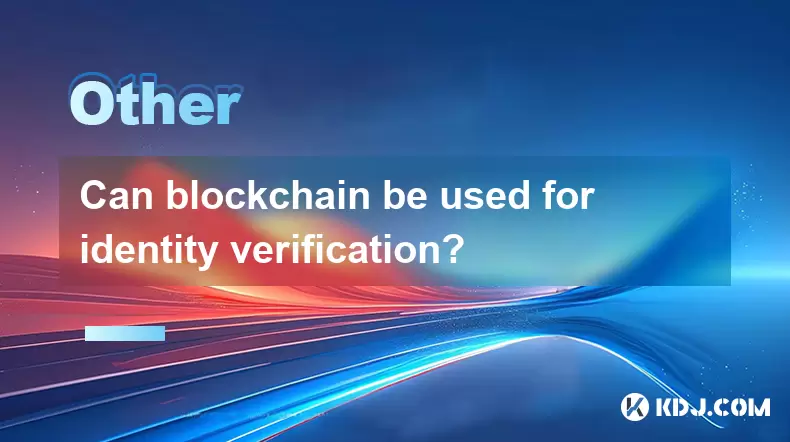
Can blockchain be used for identity verification?
Jul 18,2025 at 02:14pm
Understanding Identity Verification in the Digital AgeIn the modern digital landscape, identity verification has become a critical component for ensur...
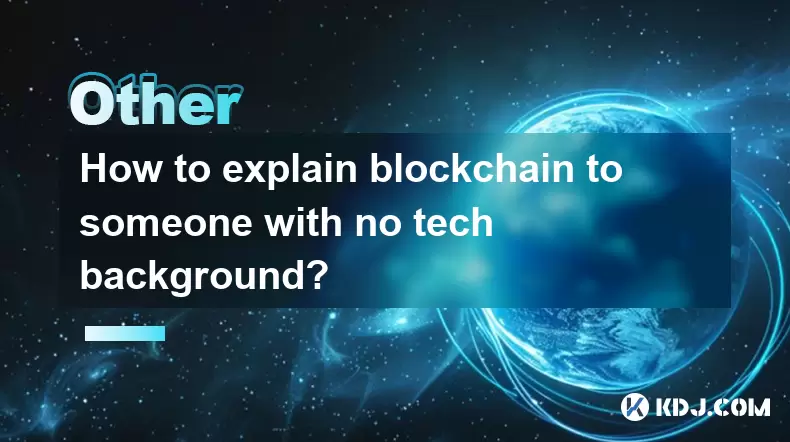
How to explain blockchain to someone with no tech background?
Jul 18,2025 at 11:08pm
Understanding the Basics of BlockchainTo explain blockchain to someone with no tech background, it's essential to start with simple analogies and avoi...
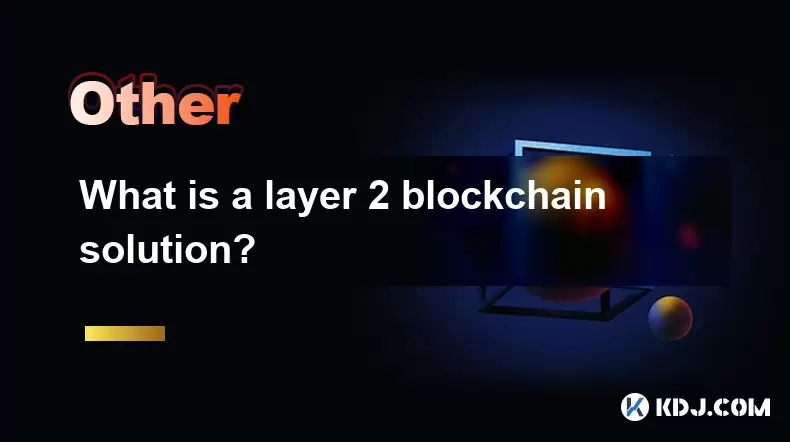
What is a layer 2 blockchain solution?
Jul 20,2025 at 01:42am
Understanding the Concept of Layer 2 BlockchainA layer 2 blockchain solution refers to a secondary framework or protocol built on top of an existing b...

Is blockchain a bubble?
Jul 20,2025 at 06:49am
Understanding the Concept of a BubbleA bubble in financial terms refers to a situation where the price of an asset rises far above its intrinsic value...
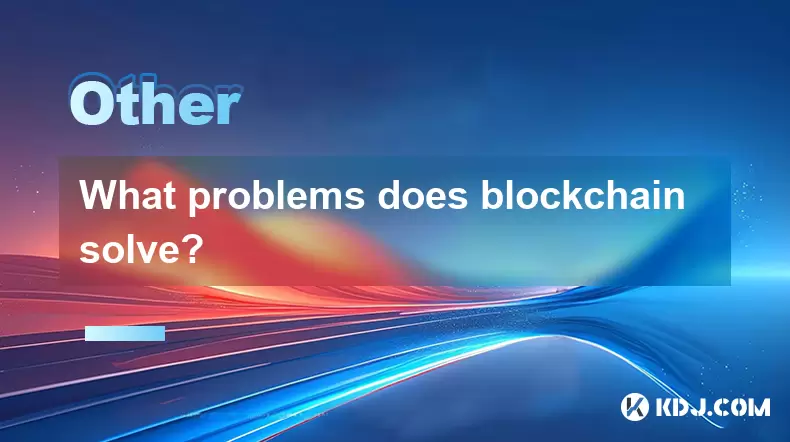
What problems does blockchain solve?
Jul 19,2025 at 12:01pm
Decentralization and Trustless SystemsBlockchain technology fundamentally addresses the issue of centralized control and trust in traditional systems....
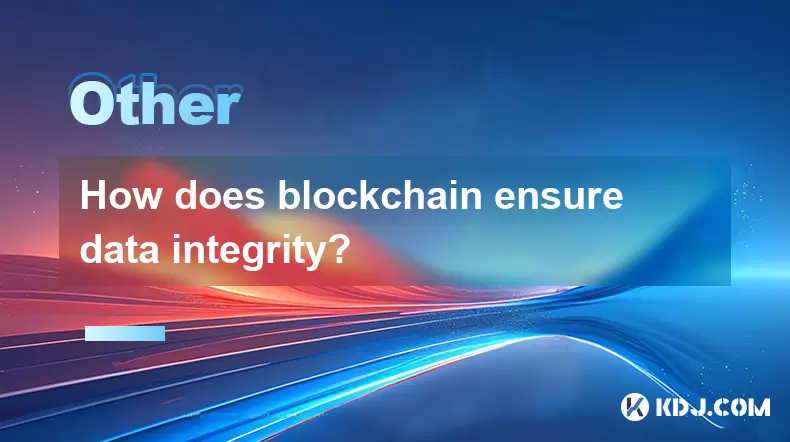
How does blockchain ensure data integrity?
Jul 19,2025 at 08:14pm
Understanding Data Integrity in BlockchainData integrity refers to the accuracy and consistency of data throughout its lifecycle. In the context of bl...

Can blockchain be used for identity verification?
Jul 18,2025 at 02:14pm
Understanding Identity Verification in the Digital AgeIn the modern digital landscape, identity verification has become a critical component for ensur...

How to explain blockchain to someone with no tech background?
Jul 18,2025 at 11:08pm
Understanding the Basics of BlockchainTo explain blockchain to someone with no tech background, it's essential to start with simple analogies and avoi...

What is a layer 2 blockchain solution?
Jul 20,2025 at 01:42am
Understanding the Concept of Layer 2 BlockchainA layer 2 blockchain solution refers to a secondary framework or protocol built on top of an existing b...

Is blockchain a bubble?
Jul 20,2025 at 06:49am
Understanding the Concept of a BubbleA bubble in financial terms refers to a situation where the price of an asset rises far above its intrinsic value...

What problems does blockchain solve?
Jul 19,2025 at 12:01pm
Decentralization and Trustless SystemsBlockchain technology fundamentally addresses the issue of centralized control and trust in traditional systems....

How does blockchain ensure data integrity?
Jul 19,2025 at 08:14pm
Understanding Data Integrity in BlockchainData integrity refers to the accuracy and consistency of data throughout its lifecycle. In the context of bl...
See all articles

























